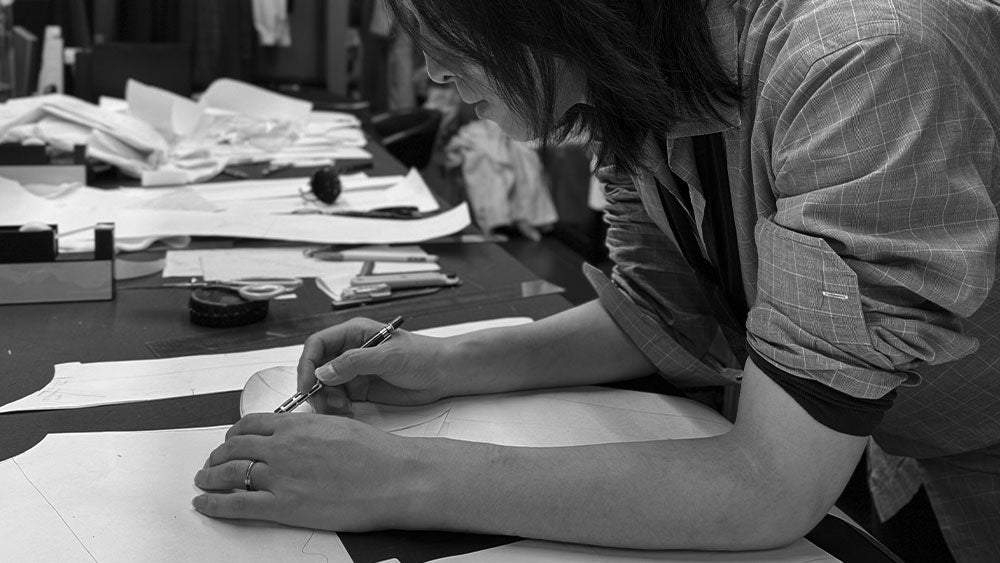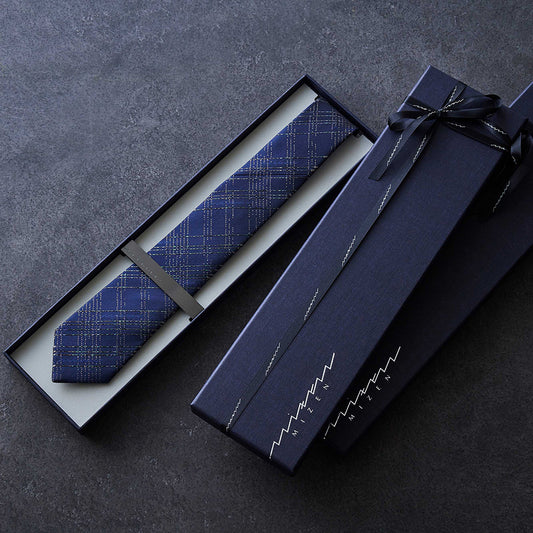
Dreams, Anxiety, and a Sewing Machine
Share
“Learning by Doing”
Back when I was a student, I used to take scissors to McQUEEN clothes I bought on sale, cutting them open to study how the sewing was done. I’d examine the stitches and try to figure out the sewing machine’s path, thinking it through and applying what I learned to my own clothes-making.
By the fall of my first year in university, I had already dropped out of the night fashion school I had worked so hard to get into. That’s because I realized the sewing techniques taught at school were completely different from what was actually used in clothes sold on the market. On one side was the mass production system focused on efficiency, and on the other was sewing used for educational purposes—two worlds apart. After leaving the school, McQUEEN became my teacher.
Even if two jackets had the same design, their silhouettes and price points could differ greatly depending on the brand. People often say expensive clothes are made of better materials and superior craftsmanship—but what truly sets them apart is the pattern making. In fact, it’s more than just the pattern; the entire garment is shaped by the brand’s philosophy. That’s what gives it a unique presence—something that sets it apart from ordinary apparel. What you’re really paying for is the ideology behind the brand.
At the time, I spent nearly all the money I had on clothes. Looking back, I now realize those purchases were a great investment—they helped shape who I am. The worst thing you can do is approach something halfheartedly. If you’re going to do something, be the most foolish person in the world and dive all the way in.
“Having Margin”
Even though I dropped out of night fashion school after just six months, I formed a fashion circle with my friends from that time. We gathered and held fashion shows in various places. Thanks to some very active and creative members, we even put on a show on the grand staircase at Kyoto Station. It turned out to be surprisingly professional. Those who wanted to design made clothes, those who wanted to model walked the runway, and those who were into music did the soundtrack. Everyone followed their own dream.
It became a proper creative group, and it was far more enjoyable than any class I had in school. While I neglected my architectural studies, I spent every night back home in front of the sewing machine.
When I made clothes back then, I was quite sloppy with patterns and sewing. My patterns were basically rough sketches drawn freehand, and I used to think it was fine to just snip off the parts that didn’t align well. From a professional standpoint, there’s really nothing praiseworthy about that. But even now, there’s one thing I can say with confidence:
“Good clothes have margin.”
Even if the seams are a few millimeters off, or if something feels a little too bold, cool clothes still look cool. When a garment feels tight or out of balance just because of a few millimeters, it’s probably too rigid. Clothes—and life—should both have a little room to breathe.
“Anxiety”
The university fashion circle was a truly meaningful experience for me. As one of its core members, I threw myself into making clothes more than anyone else.
But at the same time, I was also a student in the architecture department—a university I had to retake the entrance exam just to get into. If I didn’t pass my classes and advance each year, I wouldn’t be able to graduate. I barely attended the required minimum lectures and relied on old test papers from classmates to scrape through exams.
Among the courses, I was somewhat interested in design, so I chose “design exercises,” even though I wasn’t serious about it. But as I moved up through the years, the gap between me and my classmates became increasingly clear. While they were putting in long days and nights to master architecture, I was spending mine at the sewing machine.
“What path will I take in the future?”
By the second half of my third year, my thoughts and actions were completely focused on fashion. But I had no idea how to find a job in the fashion industry. I was obsessed with Europe and didn’t really have any companies in Japan that I wanted to work for. Somewhere deep down, I still thought of fashion as just a hobby—and that I’d probably end up in architecture after all.
Even so, I kept sewing—night after night.
Via Threads




